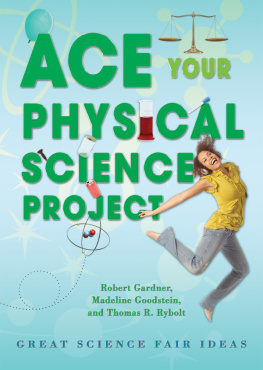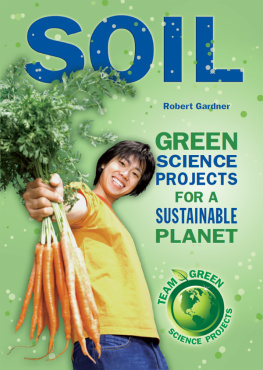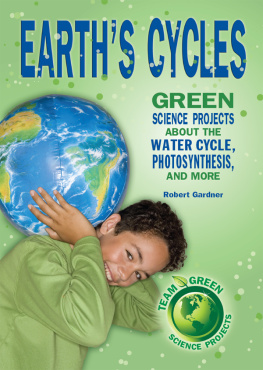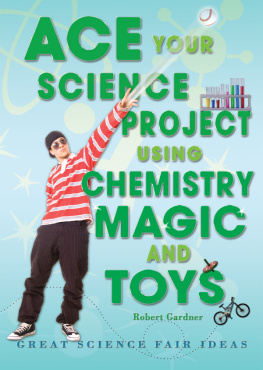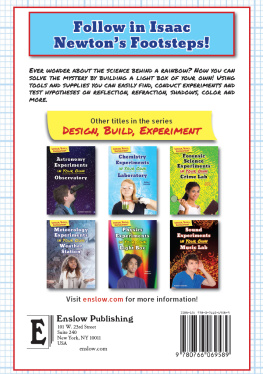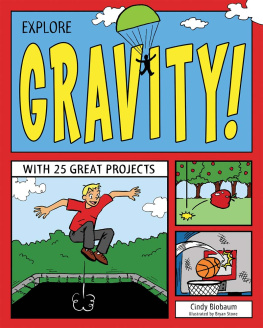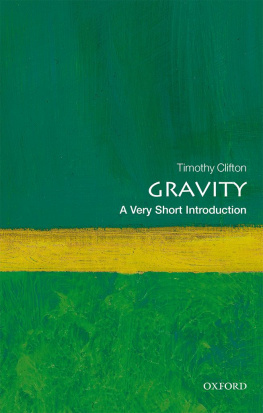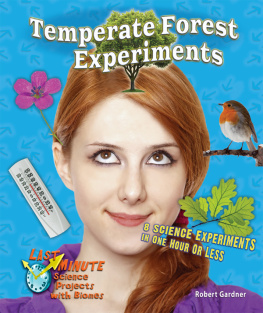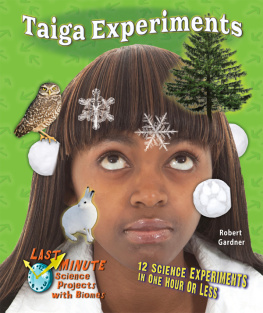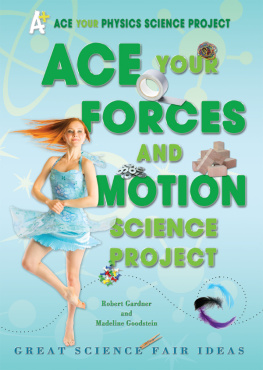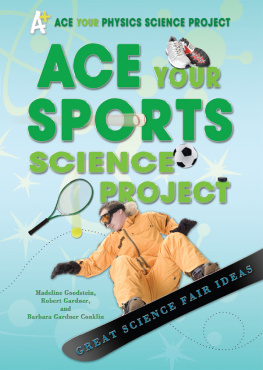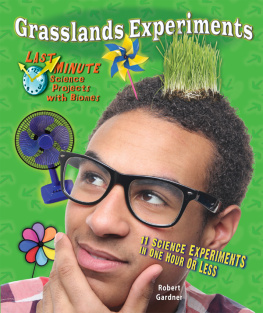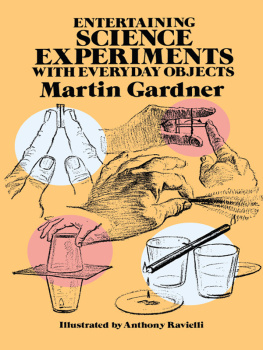Robert Gardner - The Physics of Sports Science Projects
Here you can read online Robert Gardner - The Physics of Sports Science Projects full text of the book (entire story) in english for free. Download pdf and epub, get meaning, cover and reviews about this ebook. year: 2013, publisher: Enslow Publishers, Inc., genre: Children. Description of the work, (preface) as well as reviews are available. Best literature library LitArk.com created for fans of good reading and offers a wide selection of genres:
Romance novel
Science fiction
Adventure
Detective
Science
History
Home and family
Prose
Art
Politics
Computer
Non-fiction
Religion
Business
Children
Humor
Choose a favorite category and find really read worthwhile books. Enjoy immersion in the world of imagination, feel the emotions of the characters or learn something new for yourself, make an fascinating discovery.
- Book:The Physics of Sports Science Projects
- Author:
- Publisher:Enslow Publishers, Inc.
- Genre:
- Year:2013
- Rating:3 / 5
- Favourites:Add to favourites
- Your mark:
- 60
- 1
- 2
- 3
- 4
- 5
The Physics of Sports Science Projects: summary, description and annotation
We offer to read an annotation, description, summary or preface (depends on what the author of the book "The Physics of Sports Science Projects" wrote himself). If you haven't found the necessary information about the book — write in the comments, we will try to find it.
This book introduces an objects center of gravity and the laws governing the collision of objects. It focuses on experiments related to speed, forces, balance, centers of gravity and friction. It also dives into momentum and collisions, as well as angles and distances.
The Physics of Sports Science Projects — read online for free the complete book (whole text) full work
Below is the text of the book, divided by pages. System saving the place of the last page read, allows you to conveniently read the book "The Physics of Sports Science Projects" online for free, without having to search again every time where you left off. Put a bookmark, and you can go to the page where you finished reading at any time.
Font size:
Interval:
Bookmark:
The "Physics" in Physical Fitness!
Do you want to learn where a football's center of gravity is? Do you want to understand why a curveball curves? Or why objects collide? While enjoying sports, you can learn about science. This book is filled with projects and experiments related to sports. The ideas being introduced, along with details of the scientific method, will help you to perform challenging, educational, and fun science fair projects!
ABOUT THE AUTHOR
Robert Gardner is an award-winning author of science books for young people. He is a retired high school teacher of physics, chemistry, and physical science. In 2010, he received the Lifetime Achievement Award in Hands-On Science Writing from AAAS/Subaru Science Books & Films.

While enjoying sports, you can learn about science. This book is filled with projects and experiments related to sports. Most of the materials you will need to carry out these activities involve sports equipment and athletic fields or courts. For some of the experiments, you will need one or more people to help you. It would be best if you work with friends or adults who enjoy experimenting as much as you do. In that way, you will all enjoy the experiment. If any risk of injury is involved in an experiment, it will be made known to you. In some cases, to avoid any danger to you, you will be asked to work with an adult. Please do so. We do not want you to take any chances that could lead to an injury. It is a good idea to warm up and stretch your muscles before performing sports. You have probably seen professional athletes doing so before they go into games. Your school coaches can suggest some routines, or you can check sports books in the library.
Like other good scientists, you will find it useful to record your ideas, notes, data, and any conclusions you draw from your experiments in a notebook. By so doing, you can keep track of the information you gather and the conclusions you reach. Record keeping will allow you to refer to experiments you have done that may help you in doing other projects in the future. In some of the experiments, you will have to make some calculations. Therefore, you may find it helpful to have a calculator nearby as you do these experiments and analyze the data you collect.
Some of the projects in this book may be appropriate for a science fair. Those projects are indicated with an asterisk (*). However, judges at such fairs do not reward projects or experiments that are simply copied from books. For example, plugging numbers into a formula you do not understand will not impress judges. A graph of data collected from experiments you have done that is used to find a relationship between two variables would be more likely to receive serious consideration.
Science fair judges tend to reward creative thought and imagination. It is difficult to be creative or imaginative unless you are really interested in your project; consequently, be sure to choose a subject that appeals to you. And before you jump into a project, consider your own talents and the cost of materials you will need.
If you decide to use a project found in this book for a science fair, you should find ways to modify or extend it. This should not be difficult because you will probably discover that as you do these projects, new ideas for experiments will come to mindexperiments that could make excellent science fair projects, particularly because the ideas are your own and are interesting to you.
If you decide to enter a science fair and have never done so before, you should read some of the books listed in the Further Reading. These books deal specifically with science fairs and will provide plenty of helpful hints and lots of useful information that will enable you to avoid the pitfalls that sometimes plague first-time entrants. You will learn how to prepare appealing reports that include charts and graphs, how to set up and display your work, how to present your project, and how to relate to judges and visitors.
Most of the projects included in this book are perfectly safe. However, the following safety rules are well worth reading before you start any project.
- Do any experiments or projects, whether from this book or of your own design, under the supervision of a science teacher or other knowledgeable adult.
- Read all instructions carefully before proceeding with a project. If you have questions, check with your supervisor before going any further.
- Maintain a serious attitude while conducting experiments. Fooling around can be dangerous to you and to others.
- Wear approved safety goggles when you are working with a flame or doing anything that might cause injury to your eyes.
- Do not eat or drink while experimenting.
- Do not go on a frozen lake or pond without permission from an adult.
- Have a first-aid kit nearby while you are experimenting.
- Do not put your fingers or any object, other than properly designed electrical connectors, into electrical outlets.
- Never experiment with household electricity except under the supervision of a knowledgeable adult.
- Do not touch a lit high-wattage bulb. Lightbulbs produce light, but they also produce heat.
- Many substances are poisonous. Do not taste any unless instructed to do so.
- If a thermometer breaks, inform your adult supervisor. Do not touch either the mercury or the broken glass with your bare hands.
- Wear appropriate protective gear, such as helmets and leg guards, for all sports activities in the projects you do.
When scientists have a question to answer, they start by researching. They read scientific literature and consult online science databases that are maintained by universities, research centers, or the government. There, they can study abstractssummaries of reportsby scientists who have conducted experiments or done similar research in the field.
In this way, they find out whether other scientists have examined the same question or have tried to answer it by doing an experiment. Careful research will tell what kind of experiments, if any, have been done to try to answer the question.
Scientists dont want to repeat experiments that have known and accepted outcomes. Also, they want to avoid repeating any mistakes others may have made while doing similar experiments. If no one else has done scientific work that answers the question, scientists then do further research on how best to do the experiment.
While researching for the experiment, the scientist tries to guessor predictthe possible results. This prediction is called a hypothesis.
The scientist hopes that a well-researched and carefully planned experiment will prove the hypothesis to be true. At times, however, the results of even the best-planned experiment can be far different from what the scientist expected. Yet even if the results indicate the hypothesis was not true, this does not mean the experiment was a failure. In fact, unexpected results can provide valuable information that leads to a different answer or to another, even better, experiment.
A scientific experiment starts when someone wonders what would happen if certain conditions were set up and tested by following a specific process. For example, in an experiment testing the ability of table salt (sodium chloride) to conduct electricity, you can ask the question: Is table salt more conductive when it is dissolved in water to make a saltwater solution?
To find the answer, some possible guesses, hypotheses, would be:
- Solid table salt conducts electricity better than saltwater.
- Saltwater conducts electricity better than solid table salt.
Font size:
Interval:
Bookmark:
Similar books «The Physics of Sports Science Projects»
Look at similar books to The Physics of Sports Science Projects. We have selected literature similar in name and meaning in the hope of providing readers with more options to find new, interesting, not yet read works.
Discussion, reviews of the book The Physics of Sports Science Projects and just readers' own opinions. Leave your comments, write what you think about the work, its meaning or the main characters. Specify what exactly you liked and what you didn't like, and why you think so.



